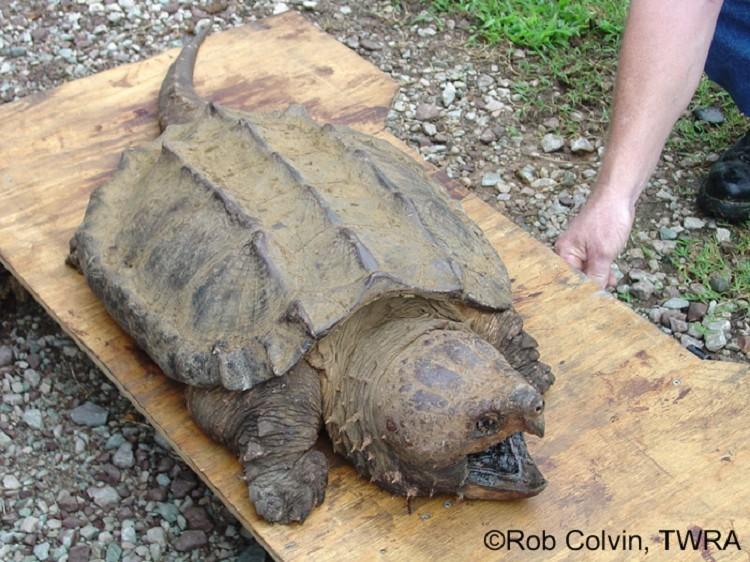The Tennessee Wildlife Resources Agency is conducting an alligator snapping turtle restoration project, which involves the release of live alligator snapping turtles. Both adult and juvenile turtles have been released to restore this rare, native species. Alligator snapping turtles are listed in Tennessee as in need of management and are illegal to take.
Here is information provided by TWRA to help understand the alligator snapping turtle.
The Alligator Snapping Turtle is our largest turtle and primarily occurs in the western third of the state with a few scattered records in central TN.
Description: A very large aquatic turtle (15.0 to 26.0 inches in length) with long, hooked beak, 3 prominent jagged ridges on carapace (upper shell), and extra row of scutes (plates) on each side of the carapace. Shell color ranges from brown to dark brown. The plastron (lower shell) is small and cross-shaped. Young Alligator Snapping Turtles have extremely rough shells and long tails.
Similar Species: Snapping Turtle has shorter snout without hooked beak, no extra marginal scutes, and much less conspicuous ridges on the shell.
Habitat: Usually occurs in large and deep bodies of water such as lakes, large rivers, and deep sloughs; often among submerged logs or root snags.
Diet: Primarily feeds upon fish, but also small turtles, snakes, frogs, crayfish, and carrion.
Breeding information: Courtship and breeding occurs in the water during the spring. Females leave the water in spring or summer to dig a nest and lay up to 50 or 60 round, leathery eggs. The eggs will hatch in 2.5 to 3.5 months later, depending on the nest temperature and humidity. Females do not provide any care for their young.
Status in Tennessee: The Alligator Snapping Turtle is listed as “In Need of Management” by TWRA, and considered rare to very rare and imperiled by Tennessee Department of Environment and Conservation. Populations were severely reduced in the past due to unregulated harvesting and habitat loss.
Fun Fact: The Alligator Snapping Turtle has a very unique hunting strategy while lying on the bottom of a lake or river. It holds its mouth wide open and wiggles a small wormlike appendage on the floor of its mouth to lure unsuspecting fish.






